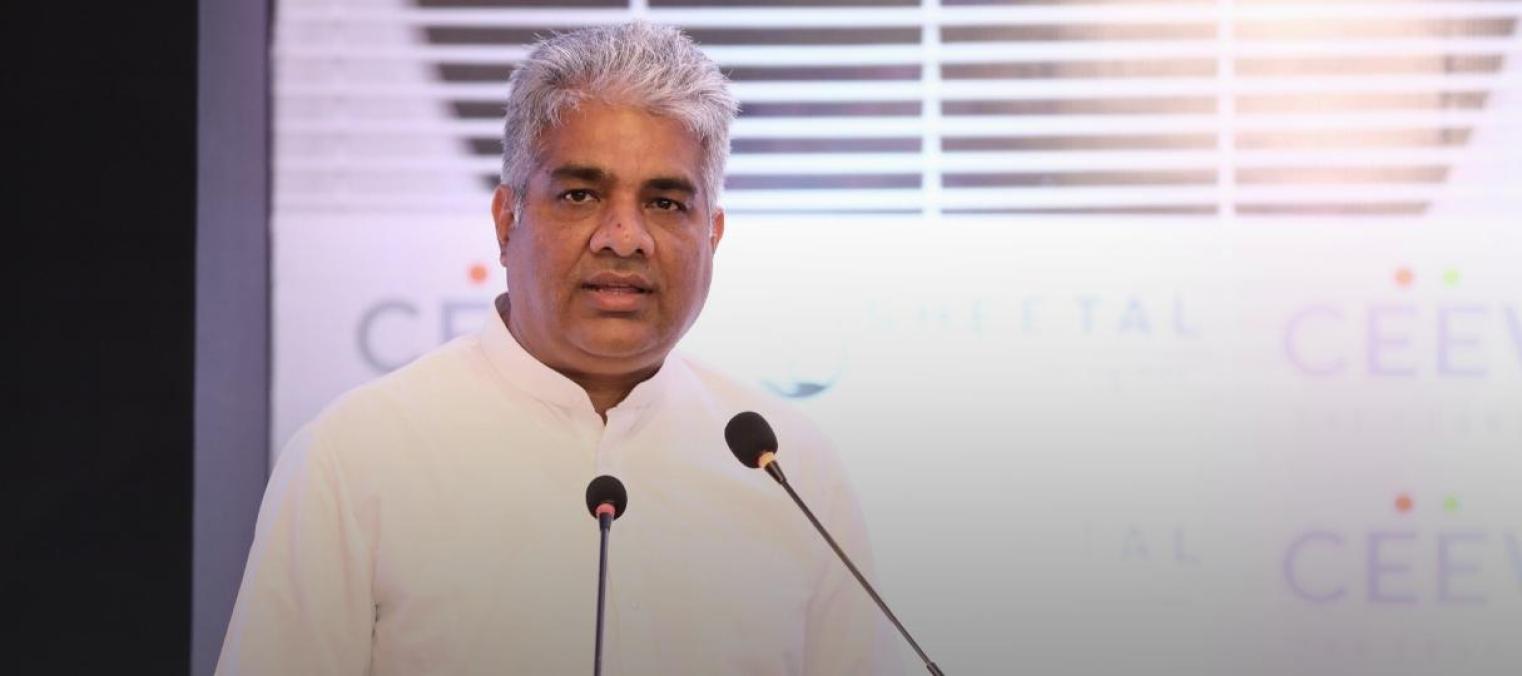




- Cooling has become a developmental need and is linked with achieving SDGs
- India has taken a lead to promote sustainable cooling through the India Cooling Action Plan
New Delhi, 13 May 2022: “Cooling today has become a developmental need and our Government is committed to providing affordable cooling to the poor. We need to find sustainable cooling solutions, especially for the workers who are building our roads, highways, and metro networks. They have as much right to sustainable cooling as any of us. India, under the leadership of Prime Minister Narendra Modi, was among one the first countries to launch a national cooling action plan (India Cooling Action Plan) in March 2019. The Plan gives a long term vision to address the cooling requirement of India across sectors such residential and commercial building, transportation, cold chain and industries,” said India’s Minister for Environment, Forest and Climate Change, Shri Bhupender Yadav, at the National Dialogue on Sustainable Cooling organised today by the Council on Energy, Environment and Water (CEEW) in New Delhi.
Shri Bhupender Yadav added, “By supporting manufacturing and innovation in the cooling sector on one hand and committing to become net zero on the other, India has provided the template for a sustainable agenda for a prosperous and climate-resilient future. I congratulate CEEW for underlining India’s leadership on the innovation front and simultaneously informing us about ways to maximise the economic gains from scaling up domestic production in the room air conditioning sector.”
He also released two CEEW studies ‘Technology Gaps in India’s Air-Conditioning Supply Chain’ and ‘Making Sustainable Cooling in India Affordable’ at the Dialogue. The CEEW studies highlighted that India needs to make available sustainable cooling options for its citizens as it aims to transition to a low-carbon and eventually a net-zero economy by 2070. Promoting local manufacturing of energy-efficient appliances for cooling and refrigeration would also be crucial.
Smt Leena Nandan, Secretary, Ministry of Environment, Forests and Climate Change (MoEFCC), said, “The India Cooling Action Plan was flagged off three years ago and significant work has already been initiated. However, much more needs to be done in terms of commitments to phasing down of HFCs. If we align our goals under the Cooling Action Plan with the larger goals that we have as part of our COP 26 announcements, then the whole problem will be settled since we will have an integrated approach.”
Dr Arunabha Ghosh, CEO, CEEW said: “As India continues to experience a severe heat wave condition this summer, shift towards sustainable cooling is a national imperative now. After committing to net zero in 2070, we will now have to work backwards to achieve the target.
Sustainable cooling could be one of the ‘sun rise’ sectors that could help us reduce emissions, create jobs and propel economic growth. To achieve this, our policymakers will have to nudge the private industry towards the sustainable pathway and thereby link jobs, growth and sustainability in the cooling sector.”
CEEW analysis found that high price points were a key barrier to mass adoption of sustainable cooling technologies, despite favourable policies and public investment. Hence, access to affordable financing should be prioritised for consumers and private companies in the sector. Private players should also be encouraged to invest in innovative technologies and new business models so as to bridge the price gap.
Further, CEEW analysis highlighted the need to invest in localising the supply chain of the Heating, Ventilation and Cooling (HVAC) sector. Further, specific components like compressors and motors need to be targeted to promote their localised manufacturing. This would help India deliver on both sustainability and jobs in the coming decade. It further recommended that government schemes should help small and medium component manufacturers to adopt new technologies in the sector and reduce their cost of compliance with new rules and regulations substantially. Also, policymakers, industry and members of academia should collaborate to form manufacturing standards and other relevant benchmarks for the domestic industry.
In 2021, the union government announced the production-linked incentive scheme to attract investments in domestic manufacturing of components for white goods such as air conditioners and refrigerators.
With improved economic growth and consequent rise in household income, India’s cooling energy demand is expected to increase eight-fold from the 2018 level to about 1,000 tonnes of refrigeration (TR) by 2038, without interventions, according to data from MoEFCC. This translates to annual greenhouse gas (GHG) emissions of 810 million tonnes of CO2 equivalent, nearly 7 per cent of the total annual national emissions estimated for 2037. Under the Kigali Amendment to the Montreal Protocol, India is committed to phase out 85 per cent of HFCs in use by 2047.
Contact: Riddhima Sethi (CEEW), [email protected]; Mihir Shah (CEEW), [email protected]